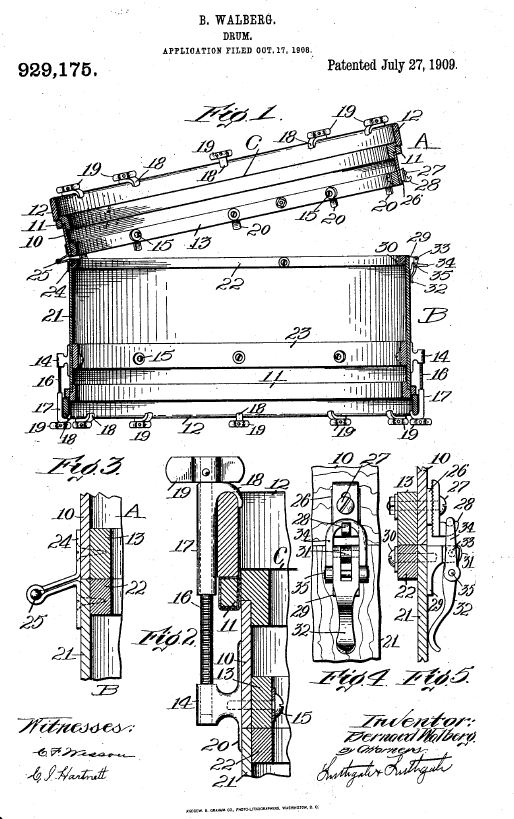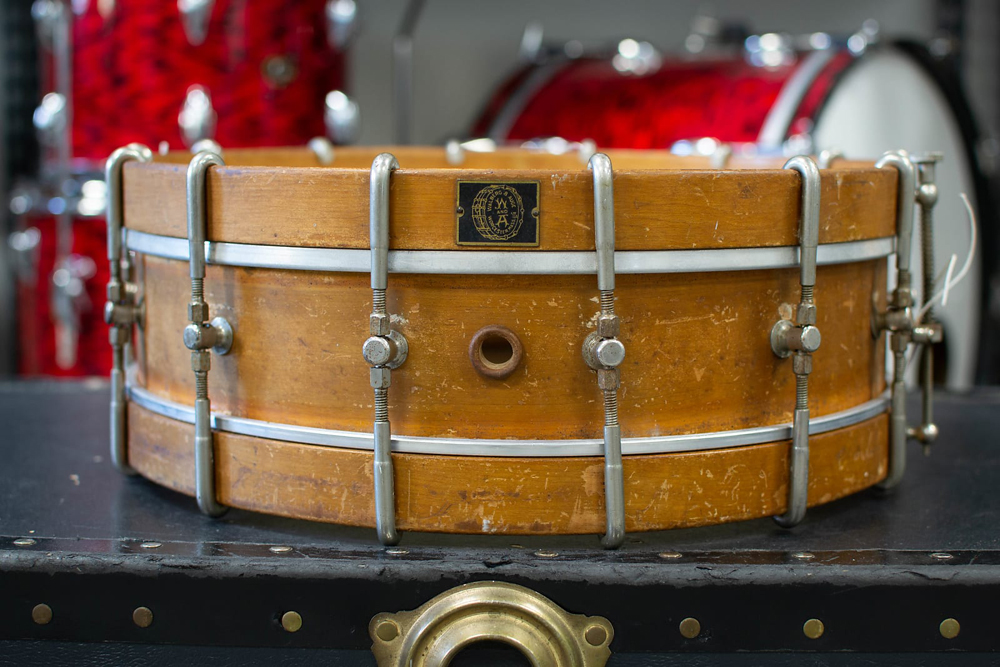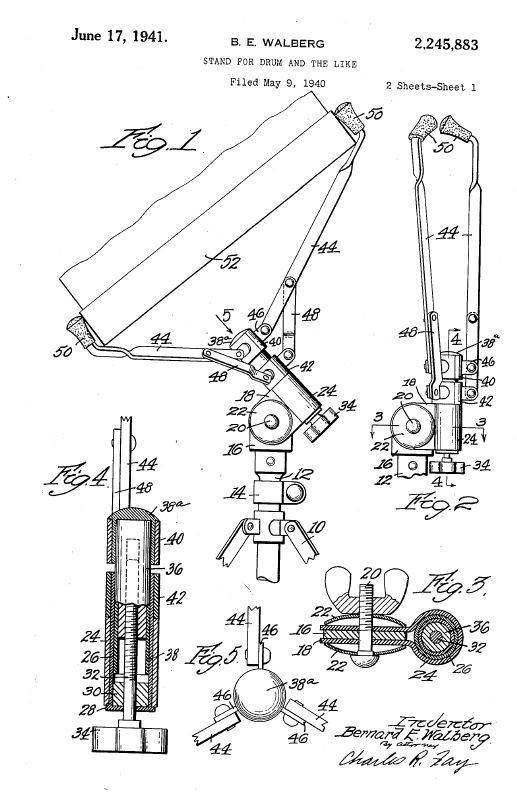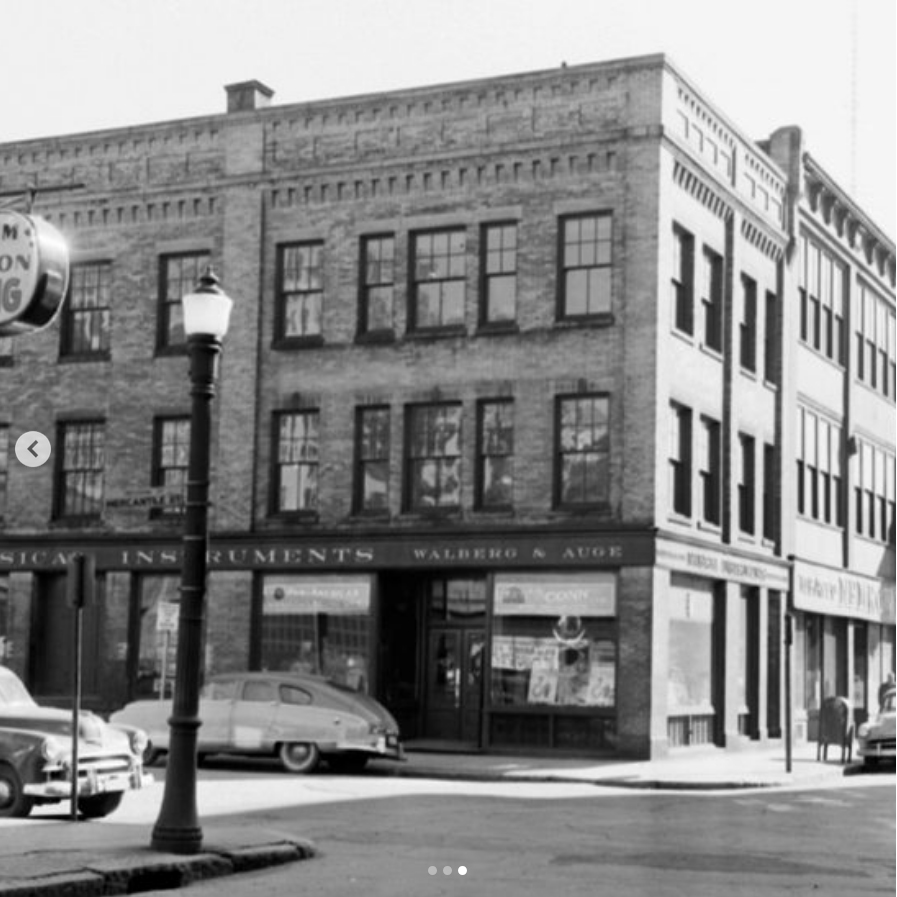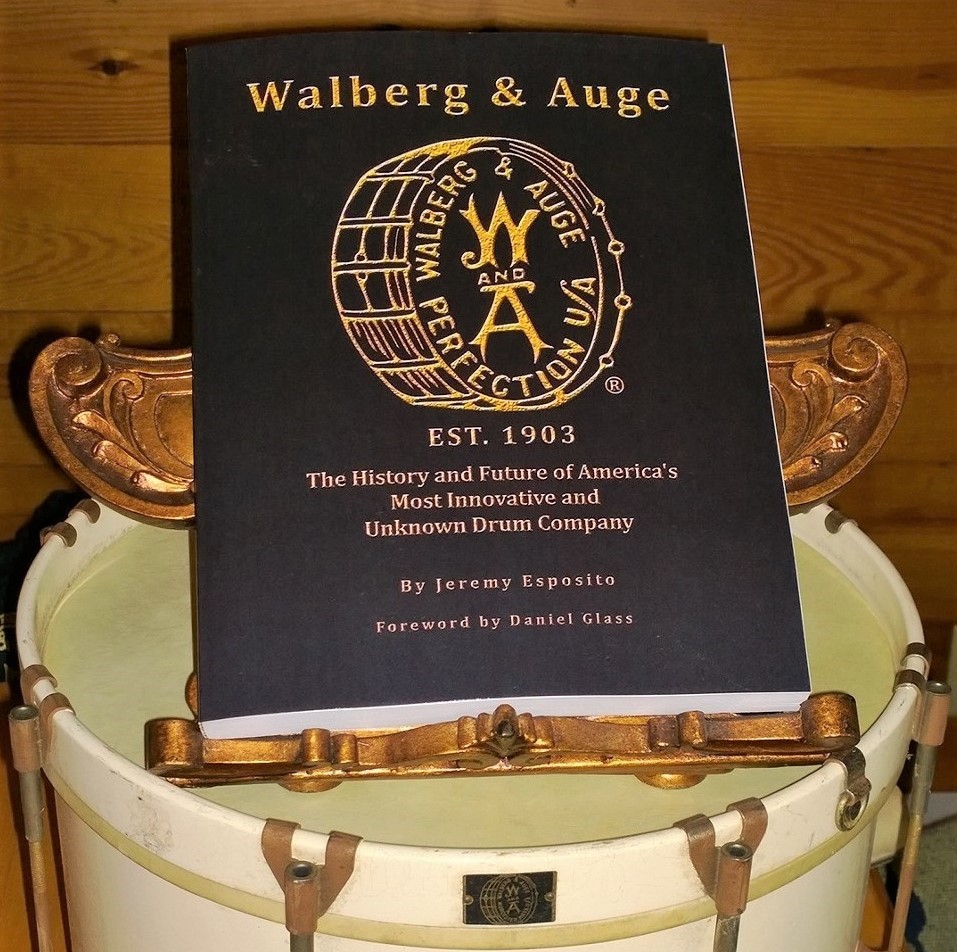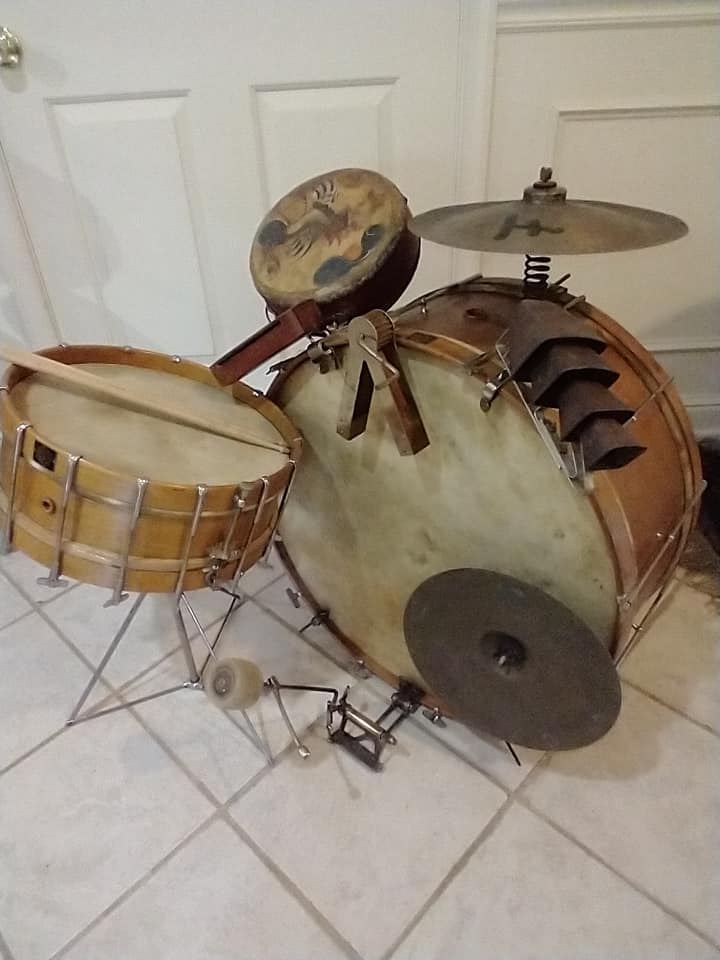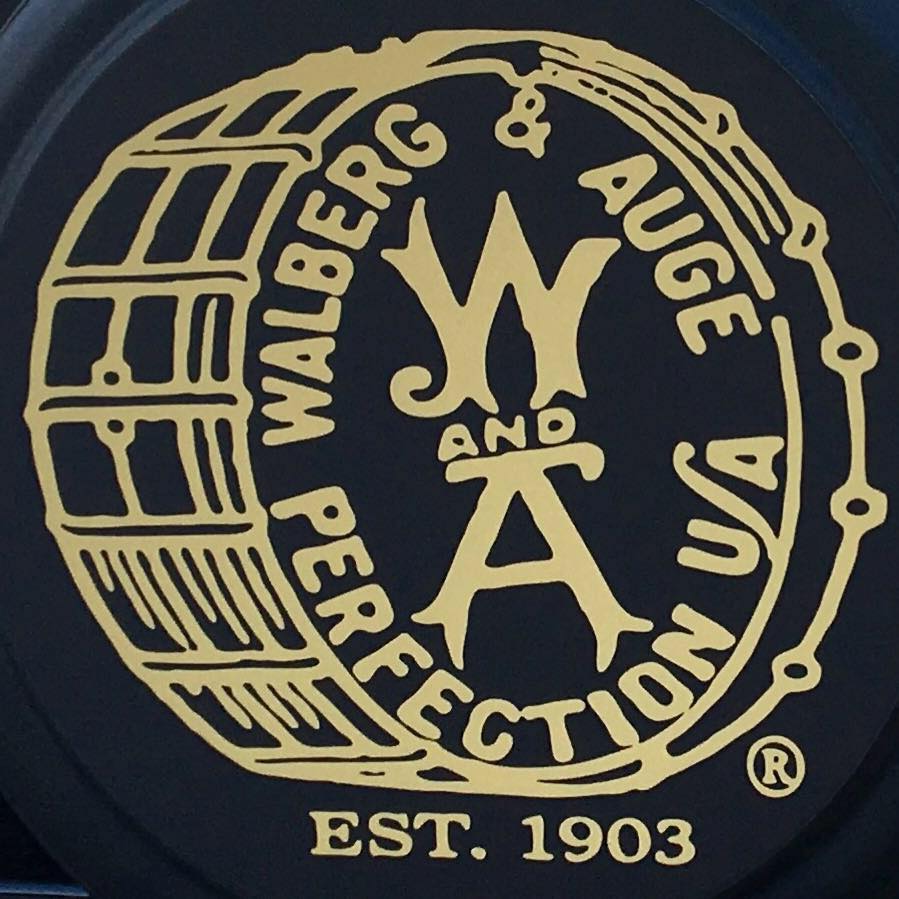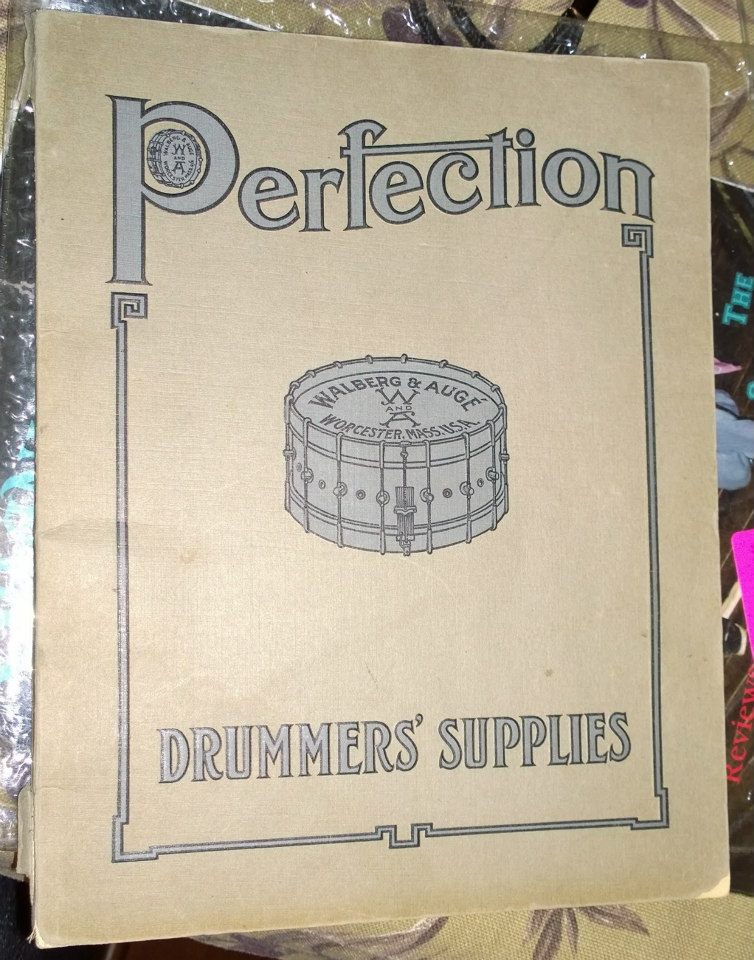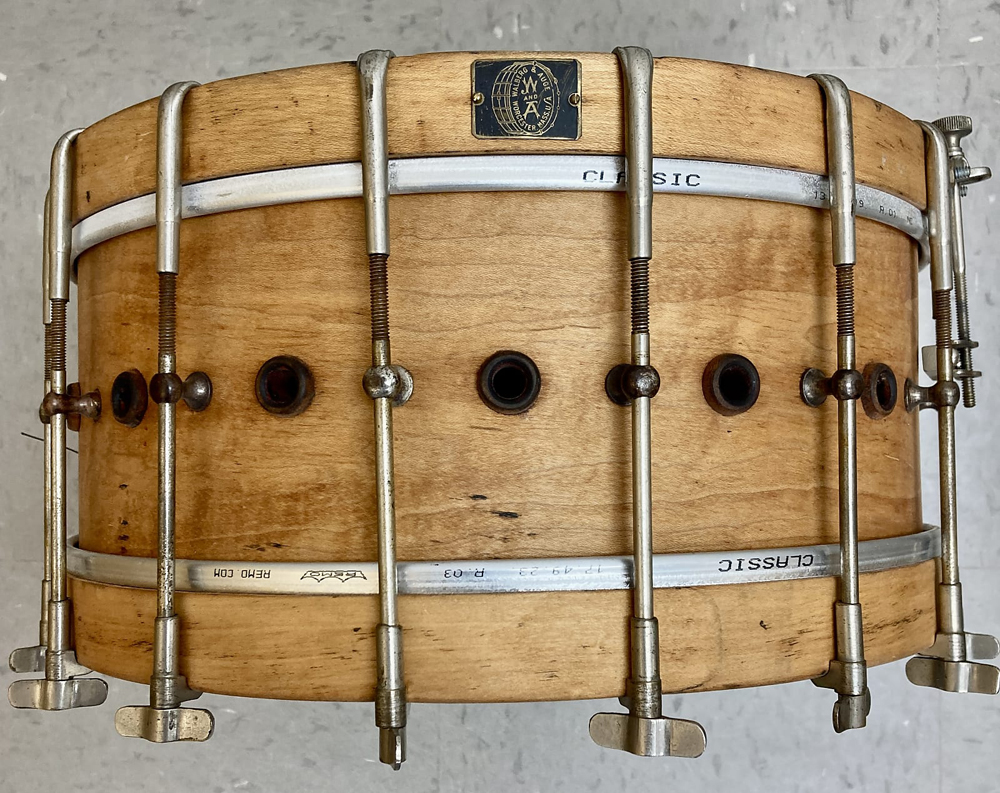Barney Walberg
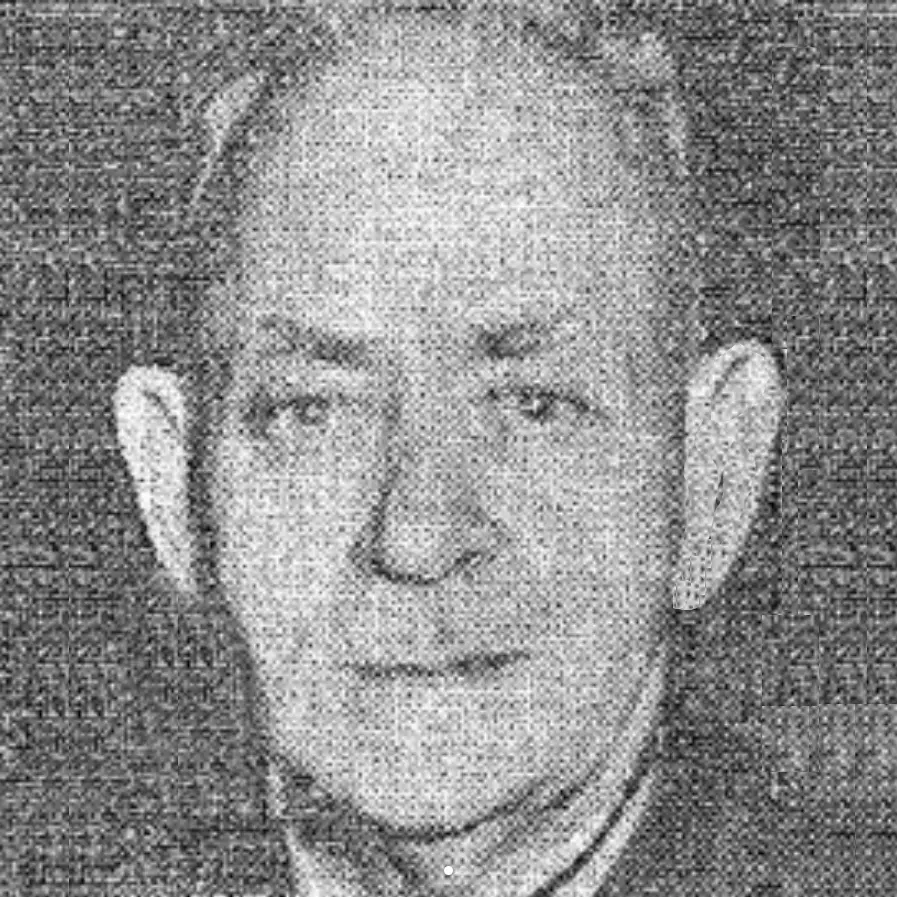
The modern drum kit evolved from the two-drum line-up of the marching bands of New Orleans; the snare drummer beat his instrument with both hands, the bass drummer used his right hand to beat his drum, and in his left hand held a wire beater that he used to play a cymbal. For non-peripatetic engagements, the snare was placed on a stand and played along with a number of “contraptions,” such as woodblocks, cowbells and cymbals (hence the terms “trap set” and “trap kit,” the alternative names by which the drummers’ implements were known).
The bass drum rested on the floor and was played by a pedal, the first of which is believed to have been created by Edward “Dee Dee” Chandler in the mid-1890s when he played with the John Robichaux Orchestra. With the invention of this accessory, a drummer was able to play bass, snare and tom-toms at the same time. The only element missing was the satisfying clash of cymbals familiar to parade-goers, a sort of punctuation-mark flourish that signaled the end of a musical phrase or a song. To fill this need, inventors came up with the “hi-hat,” a device designed to bring two cymbals together by a foot pedal. While there are several paternity claims for the revolutionary creation, the one that has the strongest legacy of commercial success to support it is that of Bernard Eric “Barney” Walberg, a partner in a musical instrument business in Worcester, Massachusetts.
EARLY HI-HAT INVENTION/USE, COMPETING INVENTION CLAIMS
Walberg entered the world of musical equipment in 1903 by buying a 50% interest in Taylor & Auge, a manufacturer of musical instruments that came to specialize in drum hardware under Walberg’s direction. In 1920, the Music Trade Review blamed Walberg and his inventions – among them the first cowbell holder – for the “advent of jazz.” Shortly thereafter, he invented his version of the hi-hat stand out of a “low boy” or ”sock” cymbal stand that the company made. Among the earliest examples of a hi-hat being on a recording is the 1929 tune “Squabblin’” (one of only two songs recorded by Walter Page’s Blue Devils), played by Alvin “Mouse” Burroughs.
There are several competing claimants to the hi-hat’s parentage among drummers themselves, the most assertive being Jonathan “Papa Jo” Jones, best known for his work with Count Basie. “I was the only bum out here with a sock cymbal,” he noted on his 1973 album The Drums, but his claim in undercut by others. As recounted by Walter Harrold, a drummer who played in several Midwestern bands, he met Jones when the latter came “to Omaha with a carnival group” that was appearing at the Nebraska State Fair. “Jo was playing piano at that time, he wasn’t playing drums,” Harrold recalled. Harrold’s father decided that Jones would make a better drummer than a pianist because, as he put it, “he’s got the beat and got the feel.” He started giving Jones lessons and, according to his son, taught Jones how to use the hi-hat. Another drummer who may have created a makeshift hi-hat for his own use was William “O’Neill” Spencer, born in 1909. Drummer Joseph “Philly Joe” Jones – not to be confused with Jo Jones – said that Spencer taught him how to use the hi-hat in Philadelphia in 1943. But even if Papa Jo or Philly Joe came up with a primitive form of the hi-hat, neither developed it into a replicable product, which is why Walberg deserves credit for the invention.
PAPA JO JONES, HI-HAT INFLUENCE, MODERN USAGE
Nonetheless, Papa Jo is credited with using the hi-hat to shift the rhythm of jazz away from the heavy sound of the bass drum in its early days to the lighter touch made possible with cymbals. As Gunther Schuller put it, in the Swing Era, Jones “transformed the percussion from its earlier, solely time-keeping and mostly vertical sounding role into a melodic-linear one, in which cymbals, with their ringing capacity and their ability to elongate sound, became a new voice in the horizontalization and linearization of jazz, and with this last innovation swing was finally achievable.” At least one Basie alum, singer Jimmy Rushing, claimed to miss the old days before Jones modernized jazz drumming: “The Blue Devils…used to play that four on the bass drum,” he said in 1963. “They all played but one way. Where they got this thing about neglecting the bass drum and carrying all the time on top, I don’t know.”
The hi-hat is capable of a number of effects now considered essential in jazz, rock and R&B, from the “chick” sound made when it’s closed using the pedal to “cooking” in shuffle time, a technique that involves striking the cymbals twice in succession (the first time closed, the second time just after the cymbal is opened).
All rather funky stuff from a guy who started out in a Worcester drum shop.
(by Con Chapman)
Con Chapman is the author of Kansas City Jazz: A Little Evil Will Do You Good (2023, Equinox Publishing), in which portions of the above appear. He is also the author of Rabbit’s Blues: The Life and Music of Johnny Hodges (2019, Oxford University Press), winner of Hot Club de France’s Book of the Year Award, and the forthcoming Sax Expat: Don Byas (scheduled for publication in April 2025).

